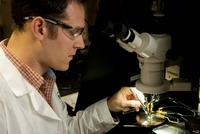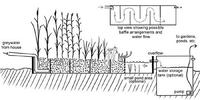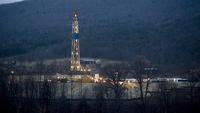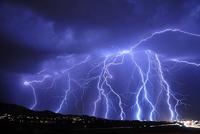-
Reducing urban water leakage
No resource is more fundamental to life and human society than water. Yet, globally, 25 to 30 percent of drinking water is lost every year due to leakages in urban water distribution systems. An EU-funded project is proposing an innovative solution for the automatic detection, sealing, and curing of typical network pipes, without digging up pavements and roads.
-
-
U.S. nation-wide quake early-warning system
The United States is likely to be struck by a major earthquake within the next twenty years. Scientists say that instead of waiting to experience a devastating earthquake and then invest in preventative measures for subsequent earthquakes, the country should be proactive and take action before the event. Investing in a nationwide earthquake warning system will save lives, prevent destruction of key infrastructure, and reduce the size of the economic loss that may result from an earthquake.
-
-
Costly DOE uranium processing facility questioned

The cost of a proposed Department of Energy’s uranium processing facility for nuclear weapons at theY-12 National Security Complex in Oak Ridge, Tennessee has increase nineteen times – from the original estimate of $600 million to $11.6 billion. If these estimates are accurate, the processing facility would entail one the largest investments in the U.S. nuclear weapons infrastructure since the Manhattan Project.
-
-
$5 million NSF grant focuses on nuclear threat inspection
Penn State University has received a 5-year grant from the National Science Foundation (NSF) and DHS for nuclear threat inspection, as part of a team led by the Massachusetts Institute of Technology and including Georgia Tech. The grant will help develop new systems and sensors that will help detect nuclear weapons, special nuclear materials, radiation dispersal devices, and related threats.
-
-
Bolstering water security in a crowded world

With limited water and the increasing number of people depending on it – there will be more than nine billion people on the planet by 2050 — water security is tenuous. Integrated water management plans using “blue,” “green,” and “gray” water, however, can increase water security by allowing agriculture to rise to the challenge of feeding a growing world population while leaving enough water for other uses.
-
-
A state of disrepair: Thousands of U.S. aging bridges risk collapse
Of the 607,380 bridges listed in the recent U.S. National Bridge Inventory, 65,605 bridges are classified as “structurally deficient” and 20,808 as “fracture critical,” with 7,795 of those bridges designated as both structurally deficient and fracture critical. Experts say this indicates significant disrepair and a risk of collapse. These 7,795 structurally deficient, fracture critical bridges carry more than twenty-nine million drivers a day.
-
-
Delaware prepares for sea-level rise

Benjamin Franklin said that that an ounce of prevention is worth a pound of cure, and Governor Jack Markell of Delaware agrees. Two weeks ago he unveiled an initiative aiming to prepare his state for the effects of climate change and sea-level rise. Markell has signed an executive order requiring all state agencies to take sea-level rise into account when designing and locating state projects. The order also requires development of strategies to make state facilities and operations better prepared to deal with climate change and sea-level rise.
-
-
Radioactive shale gas contaminants seep into a Pennsylvania creek

Researchers examined the quality of shale gas wastewater from hydraulic fracturing and the stream water above and below the disposal site in western Pennsylvania. Elevated levels of radioactivity, salts, and metals have been found in river water and sediments at a site where treated water from oil and gas operations is discharged into a creek.
-
-
Making clean drinking water universally available “achievable”
More than 780 million people around the world still do not have safe and reliable drinking water. The problem of providing clean water is most acute in developing countries, particularly in Africa, where creaking infrastructures struggle to keep pace with fast-growing urban populations; in rural areas, millions of water pumps stand unused waiting to be repaired.
-
-
Jellyfish attack shuts down Swedish nuke
The Oskarshamn nuclear plant in southeastern Sweden, one of the world’s largest nuclear power plants, was forced to shut down when it was attacked by a large cluster of jellyfish. On Sunday, operators of the plant had to scramble reactor number three after a cluster of jellyfish, weighing several tons, clogged the cooling pipes which carry water to keep the core of the reactor cool.
-
-
Harnessing lightning power to charge a mobile phone

Scientists from the University of Southampton have collaborated with Nokia on ground-breaking, proof-of-concept research into harnessing the power of lightning for personal use, an industry first that could potentially see consumers tap one of nature’s significant energy sources to charge their devices in a sustainable manner.
-
-
NYC enacts post-Sandy resiliency codes
Last week the New York City Council enacted laws implementing five recommendations of the Building Resiliency Task Force, led by Urban Green Council following Superstorm Sandy. This first package of laws makes NYC better prepared for future hurricanes and extreme weather.
-
-
Alabama State launches Nuclear Academy
A new academy at Alabama State University (ASU) will enhance security at nuclear, electric, and green-energy power installations across the United States and abroad. The new academy will provide comprehensive training for current and future security professionals who will offer infrastructure protection services to nuclear, electric and green-energy power installations.
-
-
NSF awards first coastal sustainability grants
More than half the world’s human population lived in coastal areas in the year 2000; that percentage is expected to rise to 75 percent by 2025. In wake of storms such as Hurricane Sandy, NSF grants will lead to better management of coastal environments.
-
-
Simulation show geothermal energy potential
Researchers in four countries are using an Idaho National Laboratory (INL) modeling program to simulate the subsurface physics important for geothermal energy extraction. The Fracturing and Liquid CONvection (FALCON) code enables simulation which is faster, simpler, and more comprehensive than previous options. It is helping researchers evaluate geothermal energy site data, and it may soon be able to offer predictions that could help improve geothermal energy output.
-
More headlines
The long view
Water Wars: A Historic Agreement Between Mexico and US Is Ramping Up Border Tension
As climate change drives rising temperatures and changes in rainfall, Mexico and the US are in the middle of a conflict over water, putting an additional strain on their relationship. Partly due to constant droughts, Mexico has struggled to maintain its water deliveries for much of the last 25 years, deliveries to which it is obligated by a 1944 water-sharing agreement between the two countries.
Trump Is Fast-Tracking New Coal Mines — Even When They Don’t Make Economic Sense
In Appalachian Tennessee, mines shut down and couldn’t pay their debts. Now a new one is opening under the guise of an “energy emergency.”
Smaller Nuclear Reactors Spark Renewed Interest in a Once-Shunned Energy Source
In the past two years, half the states have taken action to promote nuclear power, from creating nuclear task forces to integrating nuclear into long-term energy plans.
Keeping the Lights on with Nuclear Waste: Radiochemistry Transforms Nuclear Waste into Strategic Materials
How UNLV radiochemistry is pioneering the future of energy in the Southwest by salvaging strategic materials from nuclear dumps –and making it safe.
Model Predicts Long-Term Effects of Nuclear Waste on Underground Disposal Systems
The simulations matched results from an underground lab experiment in Switzerland, suggesting modeling could be used to validate the safety of nuclear disposal sites.
